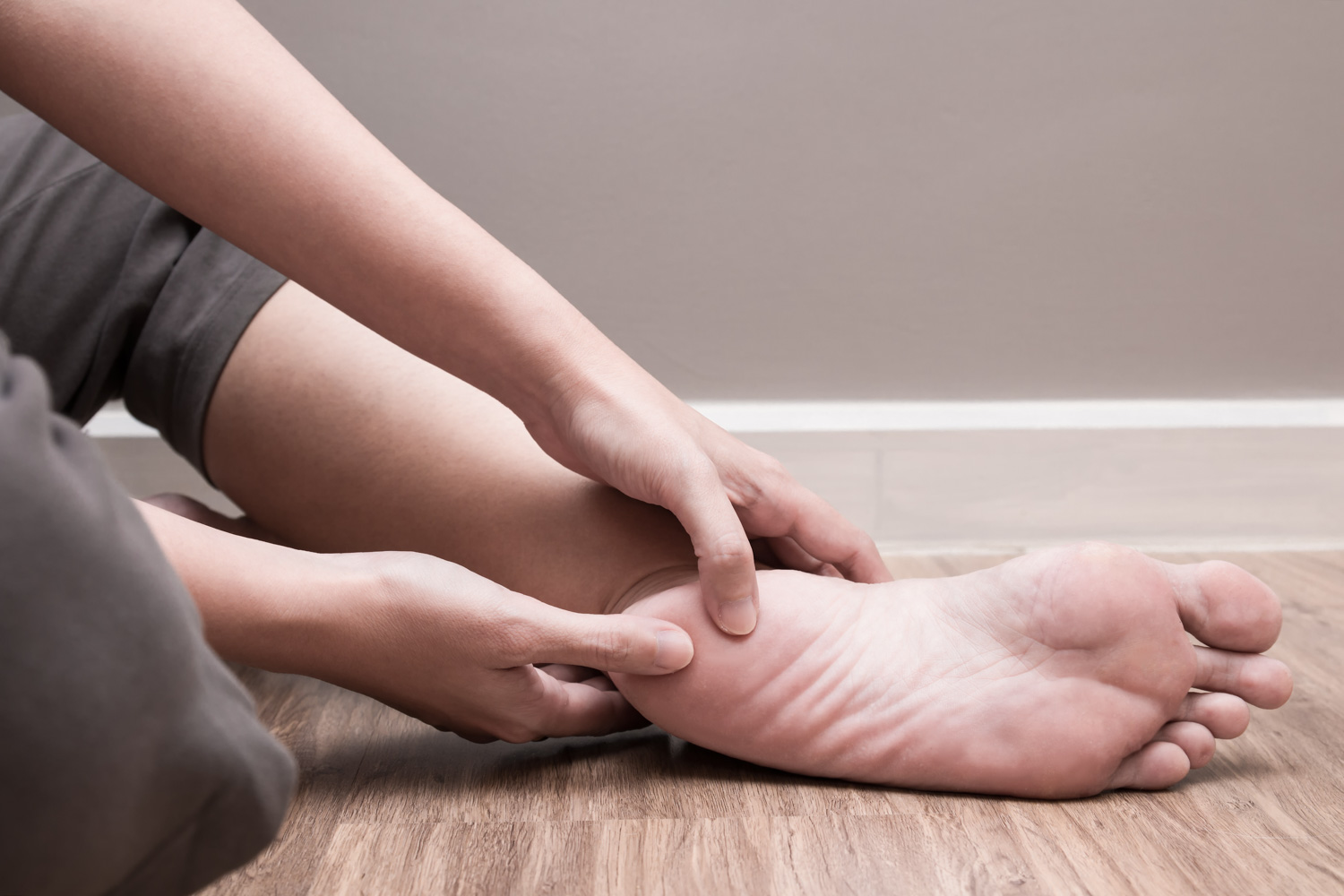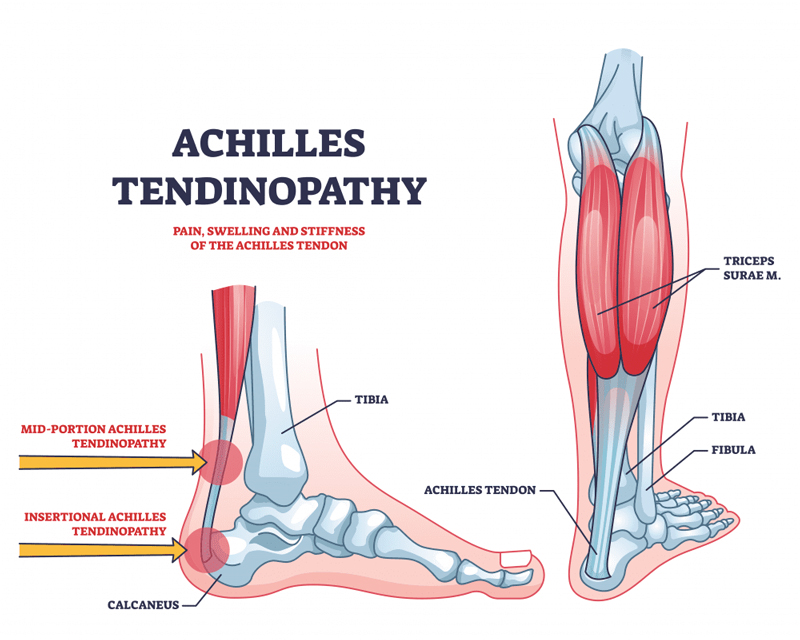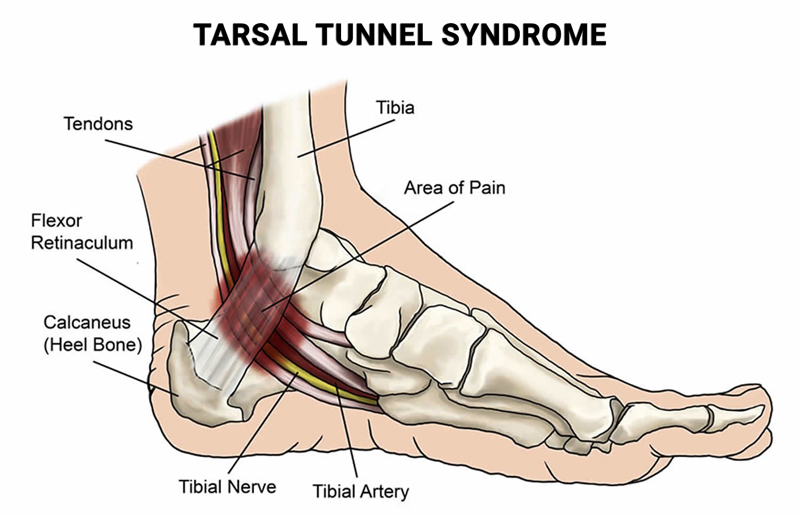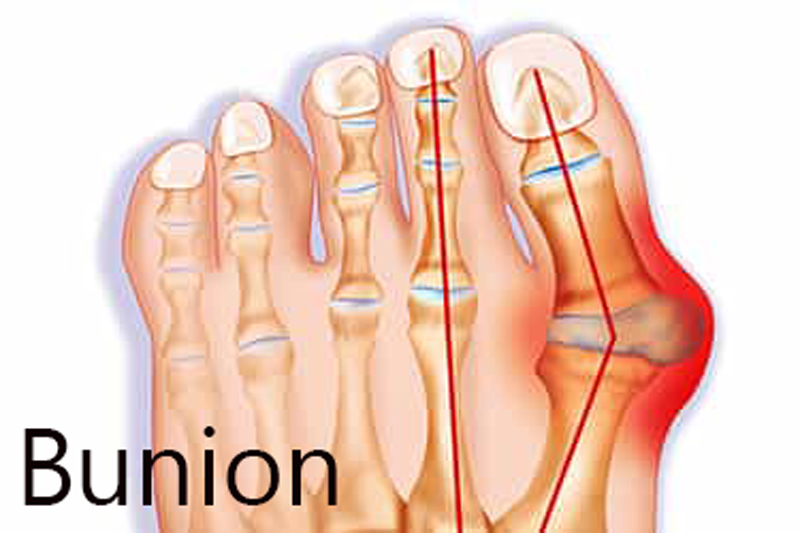Understanding and Treating Plantar Fasciitis
July 28, 2023 #Heel PainUnderstanding Plantar Fasciitis
Plantar fasciitis is a common foot condition that leads to heel pain and discomfort. It occurs when the plantar fascia, a band of tissue connecting the heel bone to the toes, becomes inflamed. Typically, the pain is most intense when taking the first steps in the morning or after a period of rest. Activities that involve bending the foot and toes up towards the shin can also trigger pain.
Key Points about Plantar Fasciitis
- Plantar fasciitis causes heel pain and discomfort.
- It arises from inflammation in the plantar fascia, the tissue connecting the heel bone to the toes.
- Pain is usually severe in the morning or after rest.
- Bending the foot and toes towards the shin often brings on pain.
- Risk factors include overuse, increased exercise, obesity, inward rolling of the foot, a tight Achilles tendon, and a sedentary lifestyle.
- Consultation with a healthcare professional is vital for an accurate diagnosis and personalized treatment.
Proper treatment can alleviate and resolve plantar fasciitis. Treatment options involve rest, gentle stretching exercises, physical therapy, orthotics, and over-the-counter pain medications. In severe cases, corticosteroid injections or surgery may be necessary. A healthcare professional must be consulted for an accurate diagnosis and personalized treatment plan.

Treatment Options for Plantar Fasciitis
Plantar fasciitis, a common foot condition causing heel pain and discomfort, can be effectively treated with various options:
Rest
Rest is crucial to allow the inflamed plantar fascia to heal and reduce strain on the heel. Activities that aggravate the pain, like running or jumping, should be avoided to give the foot sufficient time to rest and recover.
Gentle Stretching Exercises
Gentle stretching exercises can relieve pain and enhance flexibility in the foot and calf muscles. Stretching the plantar fascia and Achilles tendon reduces tightness and tension contributing to the condition. Calf stretches, towel stretches, and toe curls are recommended exercises.
Physical Therapy
Physical therapy may be advised to strengthen the foot and ankle muscles and improve overall foot function. A personalized exercise program, created by a physical therapist, targets specific areas of weakness and addresses any biomechanical issues that may contribute to the condition.
Orthotics
Orthotics, such as shoe inserts or arch supports, provide additional foot support and stability. They redistribute pressure on the plantar fascia and provide cushioning for pain relief. Custom-made orthotics may be recommended for severe symptoms or structural abnormalities.
Over-the-Counter Pain Medications
Over-the-counter pain medications like ibuprofen or acetaminophen can reduce pain and inflammation related to plantar fasciitis. These medications should be used as directed and under the guidance of a healthcare professional.
Corticosteroid Injections or Surgery
In severe cases where conservative treatments fail to provide relief, corticosteroid injections or surgery may be necessary. Corticosteroid injections reduce inflammation and offer temporary pain relief. Surgery may be considered if other treatments fail to improve symptoms and when the condition significantly affects daily activities. However, these interventions are typically reserved for non-responsive cases.
A healthcare professional should be consulted for an accurate diagnosis and personalized treatment plan. They will recommend suitable treatment options based on the condition's severity and individual factors. Effective management and resolution of plantar fasciitis are possible with the right approach.
Prevention and Self-Care for Plantar Fasciitis
Preventing plantar fasciitis is preferable to treating the condition. Adopting self-care practices and making lifestyle changes can reduce the risk of developing plantar fasciitis. Here are key prevention tips:
Maintain a Healthy Weight
Excess weight places additional stress on the feet and increases the likelihood of developing plantar fasciitis. Maintaining a healthy weight through a balanced diet and regular exercise reduces strain on the plantar fascia, lowering the risk of this condition.
Wear Supportive Shoes
Choosing the right footwear is critical for prevention. Opt for shoes with adequate arch support, cushioning, and shock absorption. Avoid high heels and shoes with thin soles, as they can worsen the condition. Ensure proper shoe fit without discomfort or crowding of the toes.
Avoid Prolonged Walking or Standing on Hard Surfaces
Extended periods of walking or standing on hard surfaces, like concrete or tile floors, strain the feet and contribute to plantar fasciitis. Take breaks and rest your feet if your job involves prolonged standing. Consider using supportive insoles or cushioned mats for extra shock absorption.
Warm Up and Cool Down
Properly warm up before engaging in physical activity, including exercises targeting the feet and calves. This prepares the plantar fascia for movement and reduces the risk of injury. Likewise, cool down with gentle stretches after exercise to prevent tightness and strain on the plantar fascia.
Regularly Stretch the Calf Muscles and Plantar Fascia
Regularly stretching the calf muscles, Achilles tendon, and plantar fascia helps maintain flexibility and prevent plantar fasciitis. Incorporate stretching exercises into your daily routine to preserve foot motion range and reduce the chances of tightness or inflammation.
Listen to Your Body
Listening to the body and taking breaks when necessary is essential for self-care. If you experience foot or heel pain or discomfort, it is important to rest. Overworking the feet increases the risk of plantar fasciitis. Pay attention to signs of strain or injury to prevent further damage.
By following these prevention and self-care tips, the risk of developing plantar fasciitis can be reduced, and healthy, pain-free feet can be maintained. Proper foot care is crucial for overall well-being and mobility.
Conclusion
Plantar fasciitis is a common foot condition that causes significant heel pain and discomfort. It results from inflammation in the plantar fascia, the tissue connecting the heel bone to the toes. While it can become chronic for some individuals, most cases can be resolved with time and appropriate treatment.
With proper self-care measures and treatment, plantar fasciitis can be effectively managed and resolved. Treatment options include rest, gentle stretching exercises, physical therapy, orthotics, and over-the-counter pain medications. In severe cases, corticosteroid injections or surgery may be necessary.
Consultation with a healthcare professional is crucial for an accurate diagnosis and personalized treatment plan. They can provide guidance and support throughout the treatment process, ensuring the chosen treatment options are suitable for the individual's specific needs.
By following the recommended treatment, self-care practices, and being patient, individuals with plantar fasciitis can experience significant improvement in their symptoms and regain full foot function. Addressing the condition in its early stages prevents chronicity and interference with daily activities.
If you are experiencing heel pain or suspect you may have plantar fasciitis, consult a healthcare professional for an evaluation and appropriate treatment recommendations. With the right approach, you can overcome plantar fasciitis and enjoy pain-free feet once again.









COMMENTS